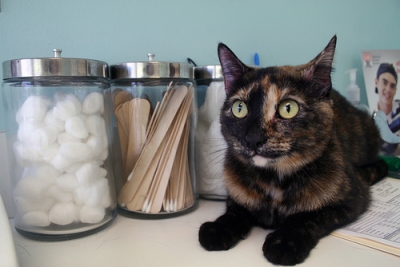
Bladder cancer in dogs and cats and other pets is a term that covers several different types of cancer. The most common type is Transitional Cell Carcinoma (TCC). TCC is aggressive and malignant. (Less common types of bladder cancer include squamous cell carcinoma, hemangiosarcoma, adenocarcinoma and rhabdomyosarcoma).
Dogs appear to develop bladder cancer more often then cats. It is more common in senior dogs and females than males. At higher risk are beagles, Scottish terriers, Shetland sheepdogs, Airedale terriers and collies.
The average age for cats developing bladder cancer is 9-10 years old with males at higher risk.
Symptoms are similar to those of urinary tract infections – bloody urine, frequent and/or painful urination, straining to urinate, not producing urine, incontinence. If metasatses have occurred, there can be back pain, inability to jump up, hind legs dysfunction, inappetance, weight loss, weakness, vomiting, breathing problems.
Some of the tests your veterinarian will perform to diagnose bladder cancer are complete blood tests, urinalysis, urine culture, xrays, cystoscopy, biopsy. Sometimes, by the time of diagnosis, about half the pets have metastases to lymph nodes, pelvic and back vertebrae and lungs. Less common is spread to the liver and chest and abdominal lymph nodes.
With surgery, it’s extremely difficult to get clean margins. Discuss with your vet whether surgery is an option and what results to expect. Generally treatment includes radiation, antibiotics to treat any infection, chemotherapy and NSAIDs (non-steroidal anti-inflammatories).
Transitional cell carcinoma eventually causes a lot of pain. Prognosis is poor. At the canine cancer groups I belong to, we feel our pets tell us when it’s time to let go. We also believe we would rather end a pet’s suffering a day too soon rather than a day too late.


